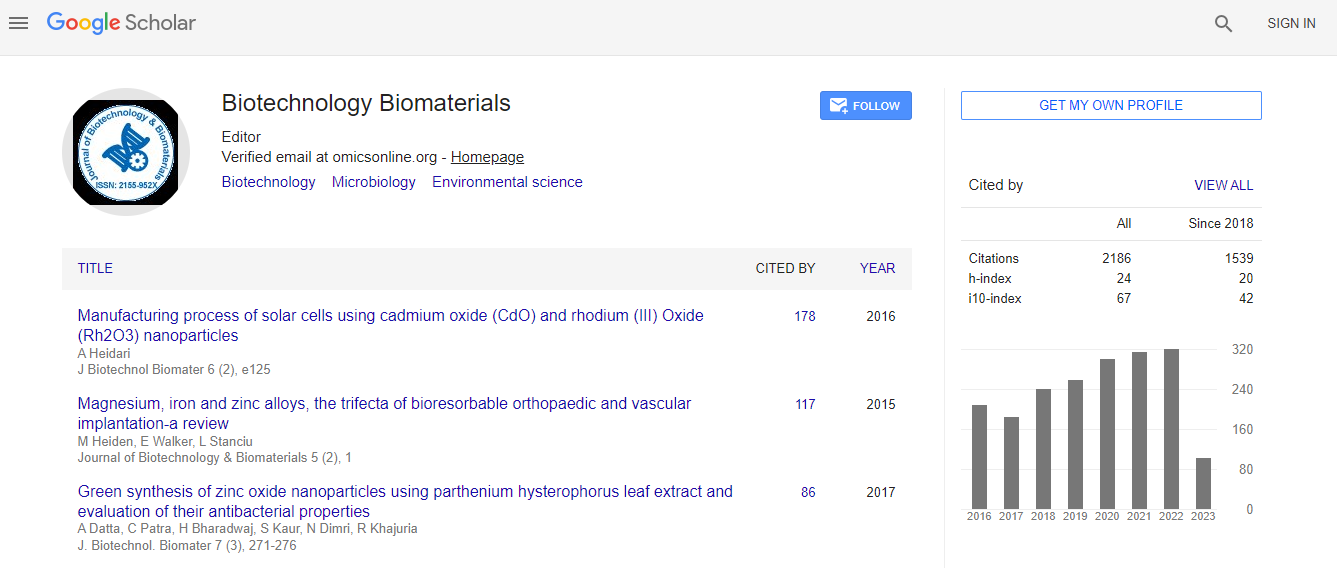Research Article
A Single Bio-based Catalyst for Bio-fuel and Bio-diesel
Jahangir Emrani1* and Abolghasem Shahbazi21Department of Chemistry, North Carolina A&T State University, Greensboro, NC 27411, USA
2Department of Biological Engineering, North Carolina A&T State University, Greensboro, NC 27411, USA
- Corresponding Author:
- Jahangir Emrani
Department of Chemistry
North Carolina A&T State University
Greensboro, NC 2741, USA
E-mail: emrani@ncat.edu
Received date: November 19, 2011; Accepted date: January 11, 2012; Published date: January 13, 2012
Citation: Emrani J, Shahbazi A (2012) A Single Bio-based Catalyst for Bio-fuel and Bio-diesel. J Biotechnol Biomaterial 2:124. doi:10.4172/2155-952X.1000124
Copyright: © 2012 Emrani J, et al. This is an open-access article distributed under the terms of the Creative Commons Attribution License, which permits unrestricted use, distribution, and reproduction in any medium, provided the original author and source are credited.
Abstract
Current homogeneous catalysts used for commercial biodiesel synthesis are toxic and flammable. For Feedstock, their reaction requires refined oil which is a human food and expensive. In addition, due to contamination, the main byproduct of their reaction, glycerol is not usable for sale as a high value product and is land filled or burned as waste. Furthermore, the use of these catalysts in conversion of low cost feed-stocks such as waste oil and greases is not economical because their reactions produce soaps and clean up of the soap imposes additional processing cost to the biodiesel synthesis process. On the other hand, heterogeneous catalysts under development for biodiesel synthesis are either derived from non-renewable resources, or have problems with toxicity or stability. The solid heterogeneous bio-based catalysts are based on renewable resources, non-toxic, stable, effective, and low cost and are expected to work well for conversion of low cost feed-stocks such as waste oil and grease such as yellow, brown and black grease. In addition to catalyzing biodiesel synthesis, biobased catalysts can convert cellulosic agricultural waste to biofuel via saccarification followed by fermentation. Due to the abundance of cellulosic biomass in the nature, this reaction has great significance as it will affect the availability of not only biofuel from the fermentation of glucose, but also the availability of all organic chemicals and even hydrogen fuel from biomass. Because the catalytic active site in these catalysts are chemically bound, in contrast to other similar catalysts such as naphthalene sulfonic acid, the catalytic active sites of biobased catalysts will not break down, or leach. As a result, both the biodiesel and the glycerol by product will be free of catalyst contaminants. This allows the biodiesel to be safely burned and the glycerol byproduct to be sold as value-added commodity for pharmaceutical and cosmetic uses.

 Spanish
Spanish  Chinese
Chinese  Russian
Russian  German
German  French
French  Japanese
Japanese  Portuguese
Portuguese  Hindi
Hindi 
